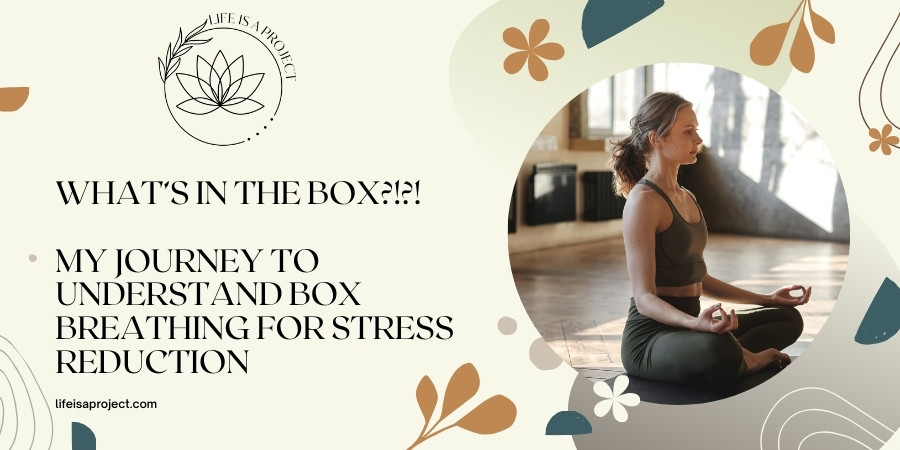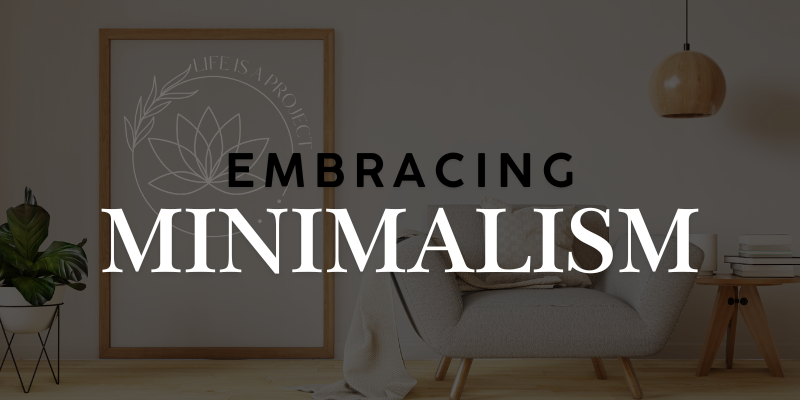Hello, friends! Let me paint you a picture: It’s mid-afternoon, your to-do list is longer than the time left in your day, and you’re feeling the pressure. Sound familiar? It certainly does to me. For years, I’d power through these moments with sheer determination, but it wasn’t until I stumbled upon a simple yet powerful technique called box breathing that I found a way to reset, refocus, and calm the chaos.
Let me take you on a little journey into this breathing practice that’s been a game-changer for me—and might just be the tool you didn’t know you needed.
The Catalyst: Stress Overload
It all started on a particularly hectic day. I was juggling deadlines, family commitments, and the relentless buzz of notifications pinging my phone. By lunchtime, my stress levels were through the roof, and I knew I needed a break.
At that point, a coworker suggested that I try box breathing, a technique that everyone from yogis to Navy SEALs uses. “It’s like a mental reset button,” she said. I was skeptical, but at that point, I was willing to try anything.
What Is Box Breathing?
Box breathing, also known as four-square breathing, is a simple yet effective technique designed to calm your nervous system, reduce stress, and bring your focus back to the present. It’s called “box” breathing because it’s structured like a square: you breathe in, hold, breathe out, and hold again, all for equal counts.
Imagine drawing a box in your mind with each breath—up, across, down, across—and you’ll get the idea.
Here’s how it works:
- Inhale: Breathe in deeply through your nose for a count of four.
- Hold: Hold your breath for a count of four.
- Exhale: Breathe out slowly through your mouth for a count of four.
- Hold: Hold your breath again for a count of four.
Then repeat. It’s that simple. But don’t let the simplicity fool you—this technique packs a punch when it comes to regaining control over your thoughts and emotions.
My First Try: The Struggle to Slow Down
On my first attempt, I found a quiet spot, closed my eyes, and started the exercise. Inhale, hold, exhale, hold. I wish I could say it was an instant fix, but honestly? It felt awkward. My mind was racing, my breaths were uneven, and those four seconds felt like an eternity. But I stuck with it, repeating the cycle a few times, trying to find a rhythm. And slowly, something started to shift.
As I continued, my breaths became more even, and I noticed my mind beginning to settle. The noise of the day faded just a little, replaced by the steady count in my head. By the end of a few rounds, I felt calmer—like I had hit pause on the stress, even if just for a moment. It wasn’t perfect, but it was a start.
Finding the Flow: Building a Routine
Determined to make box breathing a part of my routine, I committed to practicing it daily, especially during those moments when I felt overwhelmed. I’d take a minute before a big meeting, during a stressful commute, or even right before bed to clear my mind.
The beauty of box breathing is that you can do it anywhere—at your desk, in your car, or while waiting in line at the grocery store. No special equipment or fancy techniques needed.
As I practiced more, I found my rhythm and started to notice the benefits:
- Improved Focus: By concentrating on my breath, I was able to push aside distractions and hone in on the task at hand. It was like decluttering my mind, one breath at a time.
- Reduced Stress: The deliberate breathing pattern seemed to signal to my body that it was okay to relax. My shoulders dropped, my heart rate slowed, and the tight knot in my chest eased up.
- Better Sleep: On restless nights, I’d lie in bed and count through the box breathing pattern. Before I knew it, I’d drift off, leaving the day’s worries behind.
The Science Behind the Breath: Why It Works
Box breathing works because it engages the parasympathetic nervous system, which is responsible for the body’s rest and relaxation responses. When you slow your breathing and take intentional, deep breaths, you signal your body to shift out of “fight or flight” mode and into a calmer state.
This simple act of controlled breathing can lower your heart rate, reduce blood pressure, and decrease levels of cortisol—the body’s primary stress hormone.
For those of us constantly on the move, this can be a lifesaver. Box breathing is like having a reset button in your back pocket, ready to use whenever stress starts to build. It’s a way to take control when everything else feels out of control.
Making Box Breathing a Part of Your Day: Practical Tips
If you’re curious about trying box breathing, here’s how to get started:
- Set Aside Time: Find a quiet moment in your day. It doesn’t have to be long—even one to two minutes can make a difference.
- Get Comfortable: Sit or stand in a comfortable position. You don’t need to sit cross-legged or adopt any specific posture. Just be comfortable so you can focus on your breath.
- Start Small: Begin with a count of four for each step. If that feels too easy, you can gradually increase to five or six seconds. The key is to keep the count even.
- Visualize the Box: Imagine drawing a box in your mind as you breathe—up for the inhale, across for the hold, down for the exhale, and across again for the hold. This visualization can help keep your mind anchored in the present.
- Be Patient: It might feel awkward or forced at first, and that’s okay. Like any new habit, it takes time to feel natural. Stick with it, and don’t judge yourself if your mind wanders.
- Use It When You Need It: Keep box breathing in your toolkit for those moments when stress hits. Whether it’s before a big presentation, during a tense conversation, or whenever you feel overwhelmed, a few rounds of box breathing can help bring you back to center.
Embracing the Breath: A New Tool for the Journey
Box breathing has become a small but powerful part of my daily routine. It’s a reminder that, even in the busiest moments, I have the power to pause, breathe, and reset. It’s not about eliminating stress entirely—that’s a tall order in today’s world—but about finding moments of calm in the midst of the storm.
So, the next time you’re feeling overwhelmed, give box breathing a try. It might just be the simple, grounding practice you need to reclaim your day. Remember, it’s not about perfection; it’s about presence. Inhale, hold, exhale, hold—and just like that, you’ve taken the first step towards a calmer, more centered you.
Here’s to finding our calm, one breath at a time! I’m off to do a quick session myself—let’s see what a few minutes of mindful breathing can do. Until next time, take care and keep breathing easy.



